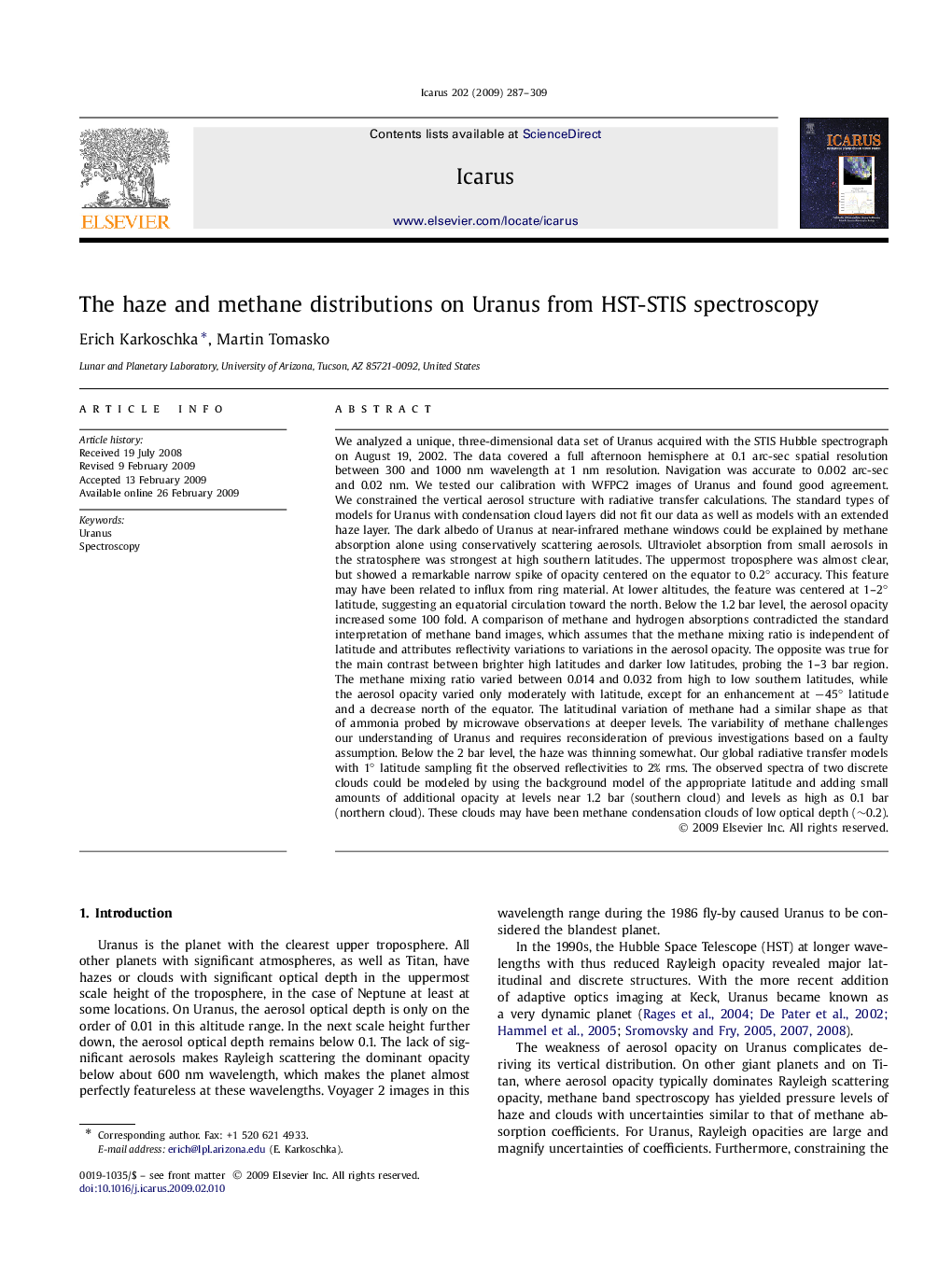| کد مقاله | کد نشریه | سال انتشار | مقاله انگلیسی | نسخه تمام متن |
|---|---|---|---|---|
| 1775116 | 1021184 | 2009 | 23 صفحه PDF | دانلود رایگان |

We analyzed a unique, three-dimensional data set of Uranus acquired with the STIS Hubble spectrograph on August 19, 2002. The data covered a full afternoon hemisphere at 0.1 arc-sec spatial resolution between 300 and 1000 nm wavelength at 1 nm resolution. Navigation was accurate to 0.002 arc-sec and 0.02 nm. We tested our calibration with WFPC2 images of Uranus and found good agreement. We constrained the vertical aerosol structure with radiative transfer calculations. The standard types of models for Uranus with condensation cloud layers did not fit our data as well as models with an extended haze layer. The dark albedo of Uranus at near-infrared methane windows could be explained by methane absorption alone using conservatively scattering aerosols. Ultraviolet absorption from small aerosols in the stratosphere was strongest at high southern latitudes. The uppermost troposphere was almost clear, but showed a remarkable narrow spike of opacity centered on the equator to 0.2° accuracy. This feature may have been related to influx from ring material. At lower altitudes, the feature was centered at 1–2° latitude, suggesting an equatorial circulation toward the north. Below the 1.2 bar level, the aerosol opacity increased some 100 fold. A comparison of methane and hydrogen absorptions contradicted the standard interpretation of methane band images, which assumes that the methane mixing ratio is independent of latitude and attributes reflectivity variations to variations in the aerosol opacity. The opposite was true for the main contrast between brighter high latitudes and darker low latitudes, probing the 1–3 bar region. The methane mixing ratio varied between 0.014 and 0.032 from high to low southern latitudes, while the aerosol opacity varied only moderately with latitude, except for an enhancement at −45° latitude and a decrease north of the equator. The latitudinal variation of methane had a similar shape as that of ammonia probed by microwave observations at deeper levels. The variability of methane challenges our understanding of Uranus and requires reconsideration of previous investigations based on a faulty assumption. Below the 2 bar level, the haze was thinning somewhat. Our global radiative transfer models with 1° latitude sampling fit the observed reflectivities to 2% rms. The observed spectra of two discrete clouds could be modeled by using the background model of the appropriate latitude and adding small amounts of additional opacity at levels near 1.2 bar (southern cloud) and levels as high as 0.1 bar (northern cloud). These clouds may have been methane condensation clouds of low optical depth (∼0.2).
Journal: Icarus - Volume 202, Issue 1, July 2009, Pages 287–309